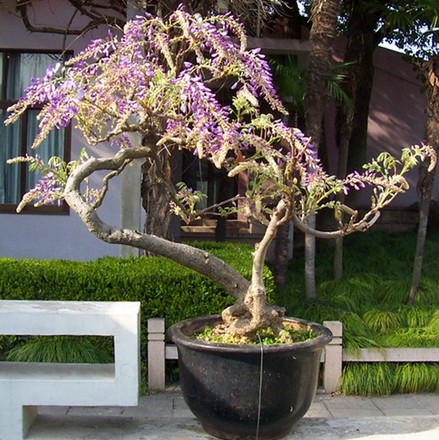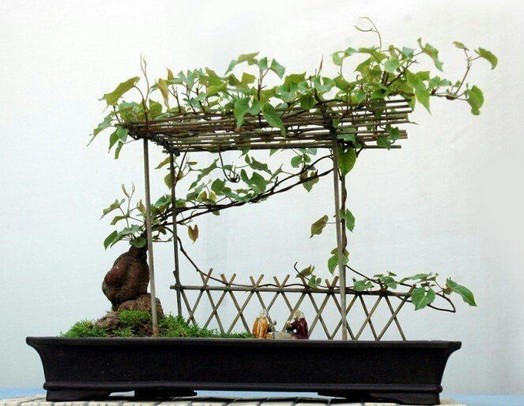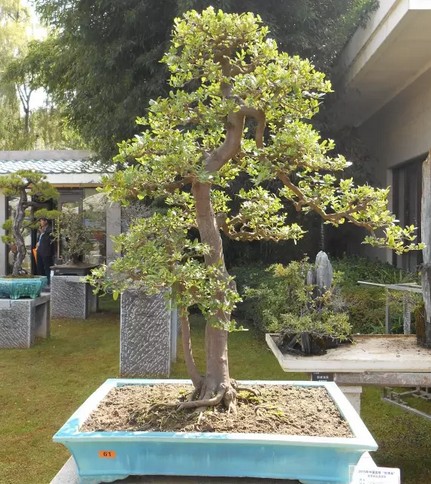Cultivation of wisteria bonsai
Wisteria, perennial woody vine of the genus Wisteria in Leguminosae. The flower is purple, the florescence is from April to June, the raceme is drooping, the pod is flat, long and ornamental. Wisteria likes warm, moist and sunny, shade-resistant, drought-resistant, loose, fertile, good sunny ground, and avoid strong winds.

Wisteria should be transplanted before germination in spring, first planted in tile pots and pruned before planting. Because wisteria is a vine, it has a longer trunk, but only the main branches needed for modeling can be retained.
Because the main root of wisteria is very long, but the fibrous root and lateral root are rare, the main root can be cut short and the lateral root can be retained. After planting, put it in a shelter to avoid exposure to the sun, and often spray water on the tree trunk to promote the germination of adventitious buds on the old stump.
After the new branches grow, erase the new buds and new branches that are not needed in modeling, and pay attention to the cultivation of transition branches, so as to make the proportion of bonsai branches and dry branches harmonious.
Time: 2019-06-13 Click:
- Prev

How to shape the bonsai of Polygonum multiflorum
Although Polygonum multiflorum has large tuber roots, the vines are so weak that they can hardly form an obvious trunk, so the method of replacing the trunk with tuber roots can be considered when modeling. It can also be modeled as an ornamental stone by making use of the characteristics of tuber hypertrophy and resembling a stubborn stone, which can be planted not only by a single plant but also by several combinations.
- Next

Key points of direct-drying bonsai modeling technology
The shape of the straight type is characterized by a dry body upright or basically upright, belonging to a tall and strong tree type, which is also the basic tree type of tree species. (1) the selection of excellent planting trees should have the following characteristics: (1) the root plate is perfect. (2) Longji is rough and upright. (3) the thickness of the trunk is moderate, and the closer it is to the top, the smaller it is.
Related
- Fuxing push coffee new agricultural production and marketing class: lack of small-scale processing plants
- Jujube rice field leisure farm deep ploughing Yilan for five years to create a space for organic food and play
- Nongyu Farm-A trial of organic papaya for brave women with advanced technology
- Four points for attention in the prevention and control of diseases and insect pests of edible fungi
- How to add nutrient solution to Edible Fungi
- Is there any good way to control edible fungus mites?
- Open Inoculation Technology of Edible Fungi
- Is there any clever way to use fertilizer for edible fungus in winter?
- What agents are used to kill the pathogens of edible fungi in the mushroom shed?
- Rapid drying of Edible Fungi

